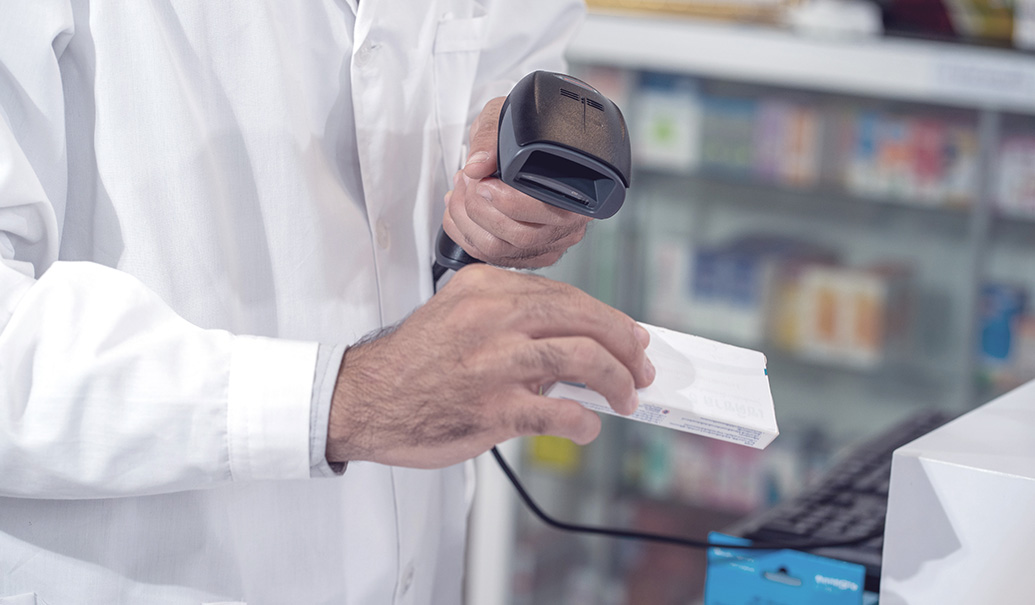To help consumers defray the cost of prescription drugs, U.S. pharmaceutical manufacturers fund a variety of patient benefits programs. These programs broadly fit into following categories: co-pay support and free goods program. Many companies have expanded these programs recent years and, in addition to alleviating the cost burden to patients, the increased access to medicine has provided community goodwill to these companies. The industry spends at least $12B a year on co-pay programs alone; as a result, revenue leakage across all patient benefits is becoming a multibillion-dollar-plus problem.
At ZS, we define “revenue leakage” as the unnecessary provision of goods or dollars that impacts gross-to-net, such as misused patient co-pay cards. Often, there are significant implications for the business if the leakage goes unnoticed. Examples abound in the news: A pharmacy in New York stole a doctor’s identity in order to file almost $7M in fraudulent co-pay claims for fake patients, a network of pharmacies and related prescribers in Detroit stole $46M from pharmaceutical co-pay cards and healthcare providers are accused of allegedly defrauding tens of millions of dollars by exploiting patient support programs intended for uninsured individuals in need. It’s becoming increasingly important for pharmaceutical companies to be more aware of the risks associated and build controls and capabilities to stem the leakages while ensuring minimal disruption to patient access.
In what ways does patient benefits fraud manifest?
Revenue Leakage can occur in patient benefits programs due to external factors (e.g., frauds committed by HCPs and pharmacies) or internal ones (e.g., due to lack of well-defined processes and capabilities to detect fraud at the manufacturer side).
External fraud is usually done to exploit system vulnerabilities by malicious actors in the ecosystem. As an example, while investigating co-pay card misuse for one of our clients, we uncovered a network of pharmacies conspiring to obtain co-pay card dollars from the manufacturer for fake prescriptions. These pharmacies displayed some peculiar characteristics—high rejection rates for the payer claims, high fill frequency per co-pay card and majority transactions exhausting permissible co-pay benefits, to name a few. On further examination, we observed the majority of the prescriptions flowing through a common set of HCPs, some of whom were actively involved in writing fraudulent prescriptions to facilitate transactions. Timely intervention led the client to block a few dozens of pharmacies with confirmed evidence of fraud and put additional few dozen on their watchlist.
Another example for leakage can be drawn from free goods programs, intended for indigent and uninsured patients. Fraudsters may seek to obtain unnecessary product to sell on the gray market or launder via returns processes. In some cases, we have observed certain clinics illegally incentivizing people to sign up for programs and obtain medicine and then incentivizing them to “sell” (for as little as $50) the medicine back to the clinic. For more open-network programs, free goods can also be exploited for 340B double-dipping, which may fall into a gray area of leakage, depending on a manufacturer’s contracts for their programs. Strengthening the eligibility criteria and more rigorous validation has helped curb the free drug program misuse.
Internal leakage can occur from poor data management, outdated processes or weak analytics that may not support holistic fraud detection and monitoring. For example, using the same override approval code for all one-time disputed co-pay transactions could allow a pharmacist to record the code and keep using it to pass transactions through instead of getting the proper approvals first. In other cases, rudimentary rule-based approaches may not be able to identify sophisticated actors that look like legitimate pharmacies as they intersperse fake claims among the real ones.
These categories don’t exist in isolation. Oftentimes, external fraud is exacerbated by issues with internal processes, lack of monitoring and disorganized data that allows fraudulent claims to slip through the noise.
How can pharma companies use AI technology to mitigate fraud?
Traditionally, manufacturers have dealt with revenue leakage reactively and relied on rudimentary rule-based approaches or human interventions to ferret out frauds. Given the evolving nature of stakeholder interactions and manifestations of fraud, especially across high-priced specialty products, the cost of missing it is becoming too high for manufacturers to rely on traditional techniques alone, necessitating the need to employ sophisticated analytics to identify potential indicators of fraud early on and in real-time. Fortunately, advances in AI, big data and process automation present a unique opportunity for pharmaceutical companies to create a fraud detection capability that can detect patterns, unearth hidden interactions or relationships and identify new rules that may go undetected using traditional approaches.
Taking lessons learned from established risk and fraud detection practices in the finance and high-tech industries, ZS has helped leading pharma manufacturers take a programmatic approach to building the capability and mitigating patient benefits fraud through a proven three-phase journey.
- Assess exposure and opportunity across portfolio
First and foremost, it starts with aggregating the data and knowledge at disposal, reviewing product spend and estimating the exposure to revenue leakage. Opportunity could vary based on program type and therapy area, as some program type and therapy area combination could be more prone to frauds compared to others. For example, free goods fraud is more prevalent within therapy areas with patient stigma around treatment and are more likely to witness an increased demand in the black-market, while co-pay cards offering high benefits per patient increase the likelihood for targeting by max-out schemes.
For one of our clients, we identified immunology as the priority therapy area for fraud risk. Their immunology portfolio comprised several products approved across indications that had co-pay programs witnessing high co-pay benefits per patient and increasing YoY co-pay utilization despite declining immunology sales. Overall, we identified more than half of a hundred million dollars at risk, with immunology contributing roughly half of that. - Demonstrate value through proof of concept for priority therapy areas
Second, to demonstrate value for the flagship product or brand, the best practice is to conduct proof-of-concept (POC) to deep-dive and discover discrepancies that aren’t easily apparent from the routine review alone. It’s worth noting that the third-party patient benefits vendors who help run the programs and share the data are valuable partners, however they usually lack resources, analytical prowess and in-depth product knowledge to tackle the complexities involved. This POC can help evaluate gaps in vendor’s processes that may need to be plugged to prevent revenue leakage. For scalable anomaly detection, we recommend taking an unsupervised learning approach, leveraging powerful AI-machine learning algorithms to identify hidden patterns to detect anomalous transactions.
If the POC is successful, use the insights gleaned and expand the anomaly detection across the entire portfolio. In a proof-of-concept exercise for a large pharma client, an AI and machine learning-powered approach unearthed around 50% more anomalies compared to those detected by legacy rules-based system. - Build, scale and operationalize capabilities
To maximize benefits toward patients and curb unnecessary resource waste in the long run, an organization should build capabilities to systematically monitor patient support leakage. An anomaly detection engine should be operationalized to proactively and routinely review new data as it generates alerts and prevents misuse. No matter how accurate and precise an algorithm may be, the human feedback process is important in the overall operational ecosystem. Over time, the feedback mechanism helps better capture known anomalous patterns, creating a “semi-supervised” approach, which is complemented with the unsupervised approach to defend against shifting patterns of fraud.
For one big biopharma company, we helped set up and operationalize a data forensics capability that was instrumental in enabling the manufacture to recover more than $15M in co-pay card fraud through legal action within a year. The capability has now been expanded to free drug programs and other revenue-leakage avenues.
Patient benefits fraud is an often overlooked but important aspect of revenue leakage. With fraudulent activities on the rise, it’s time for pharmaceutical companies to act and take proactive steps. Advances in AI and machine learning-based solutions coupled with human intervention offer immense promise to mitigate these frauds. Building a fraud detection and monitoring capability requires an executive sponsorship and long-term planning. In addition to systems and processes, pharmaceutical companies will require dedicated focus and cross functional collaboration (brand, patient support, legal, co-pay vendors, etc.) to derive maximum value. In the long run, if done correctly, this capability can act as a source of competitive advantage for pharmaceutical companies to yield tangible dollar recovery, major bottom-line savings and free up budget to continue to safeguard patient access.
Add insights to your inbox
We’ll send you content you’ll want to read – and put to use.















